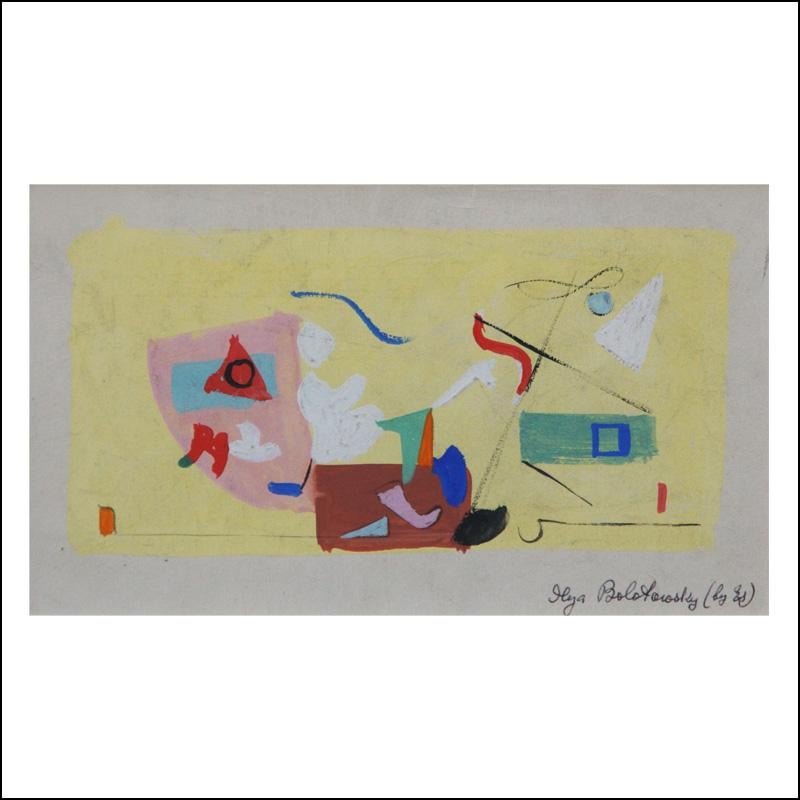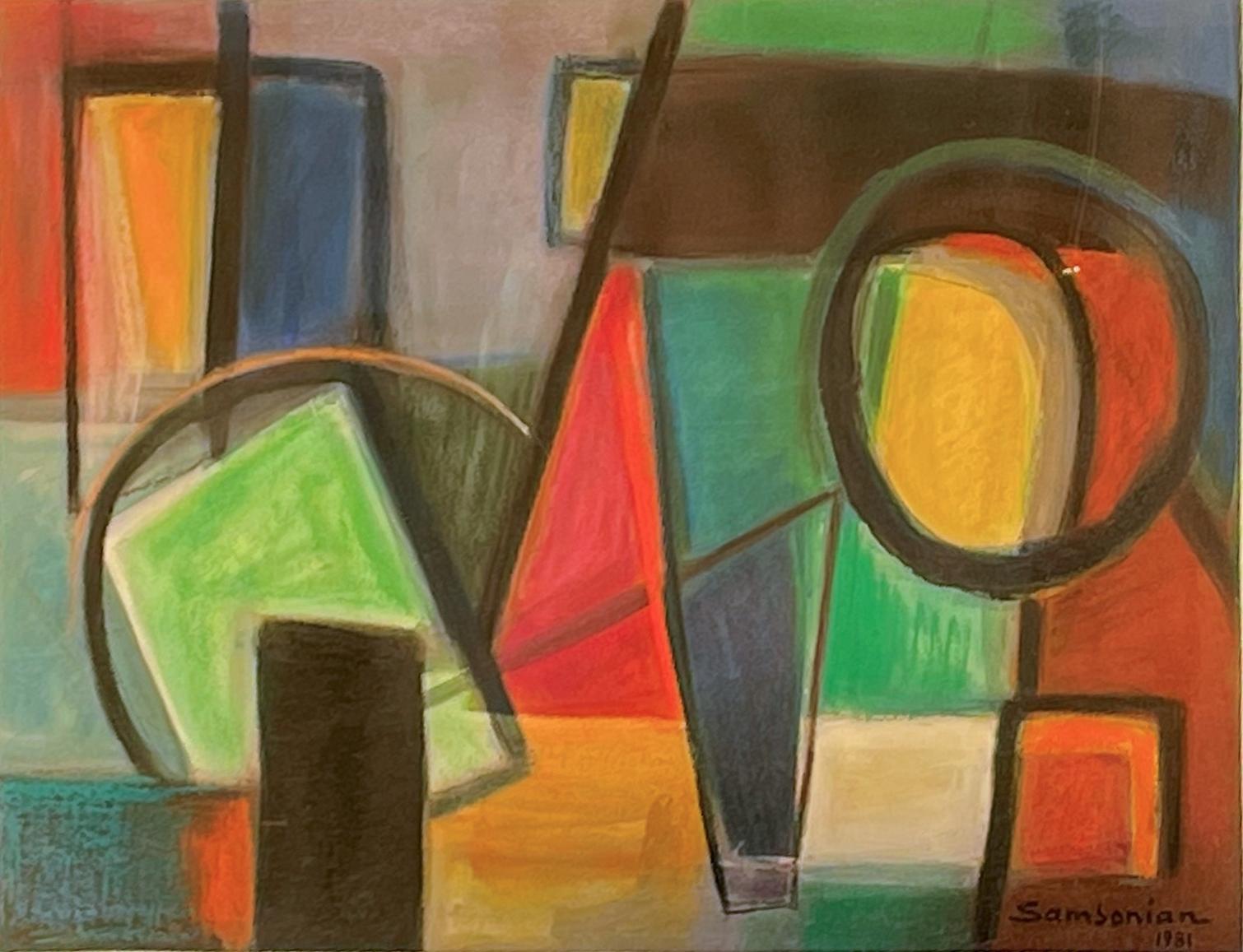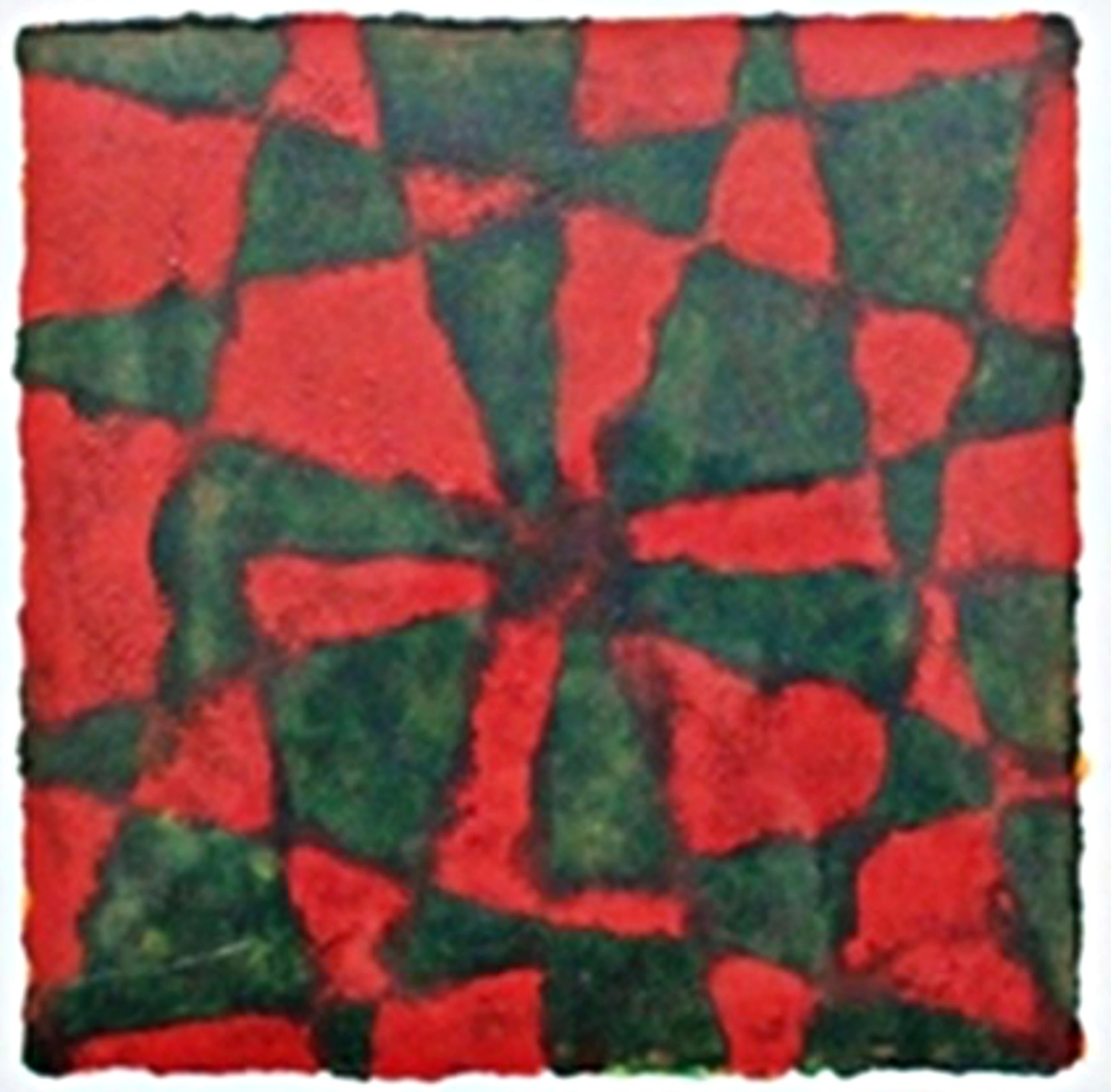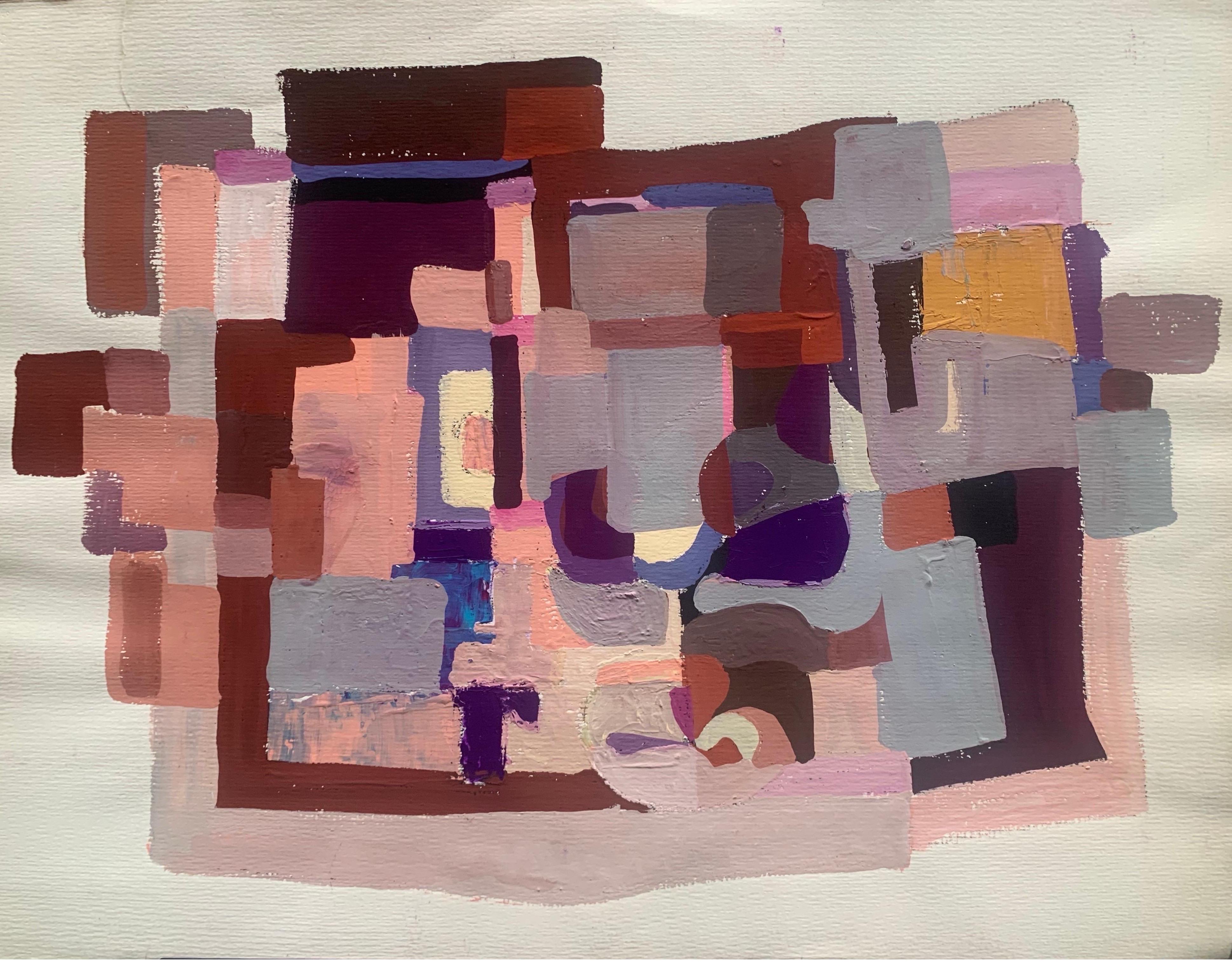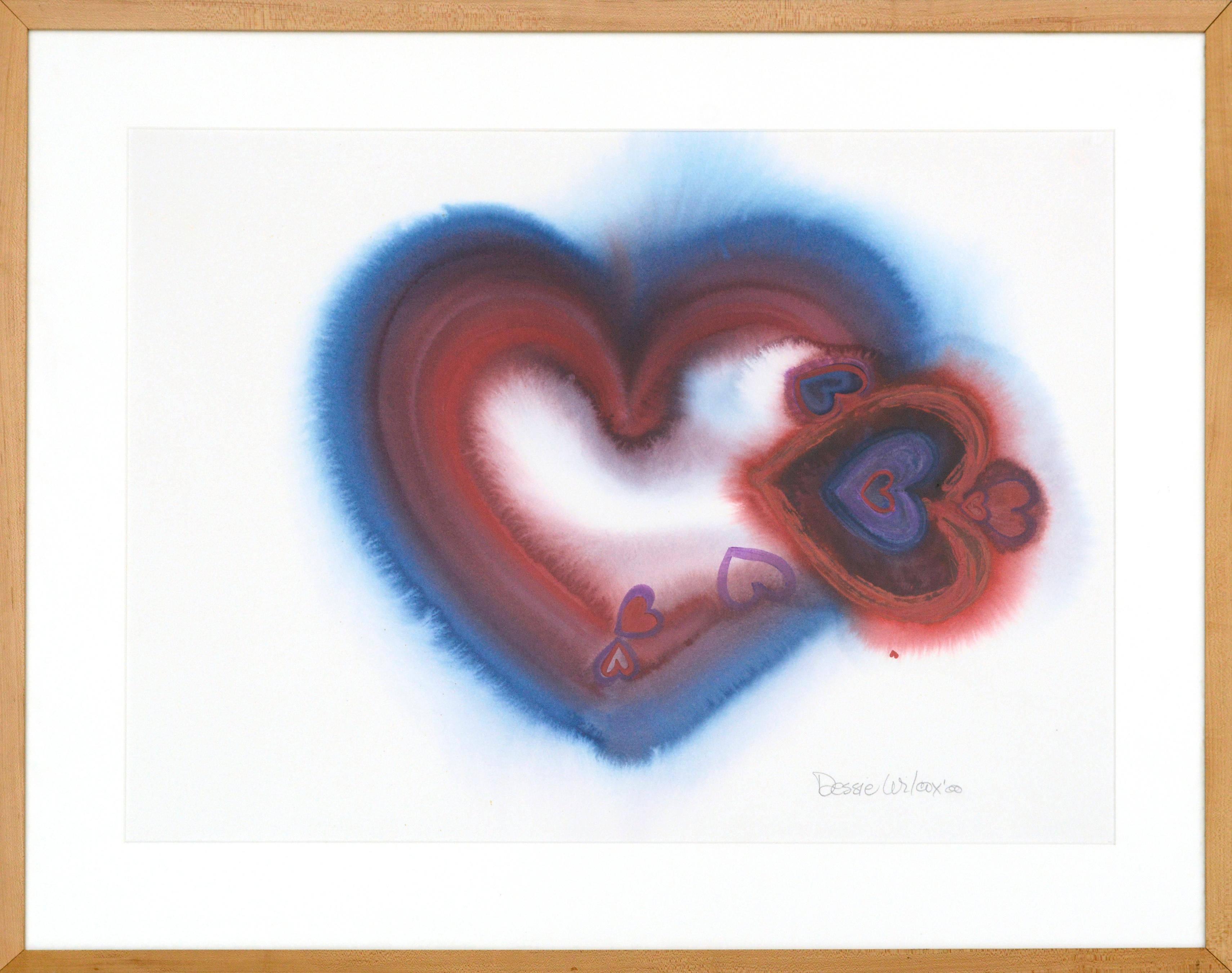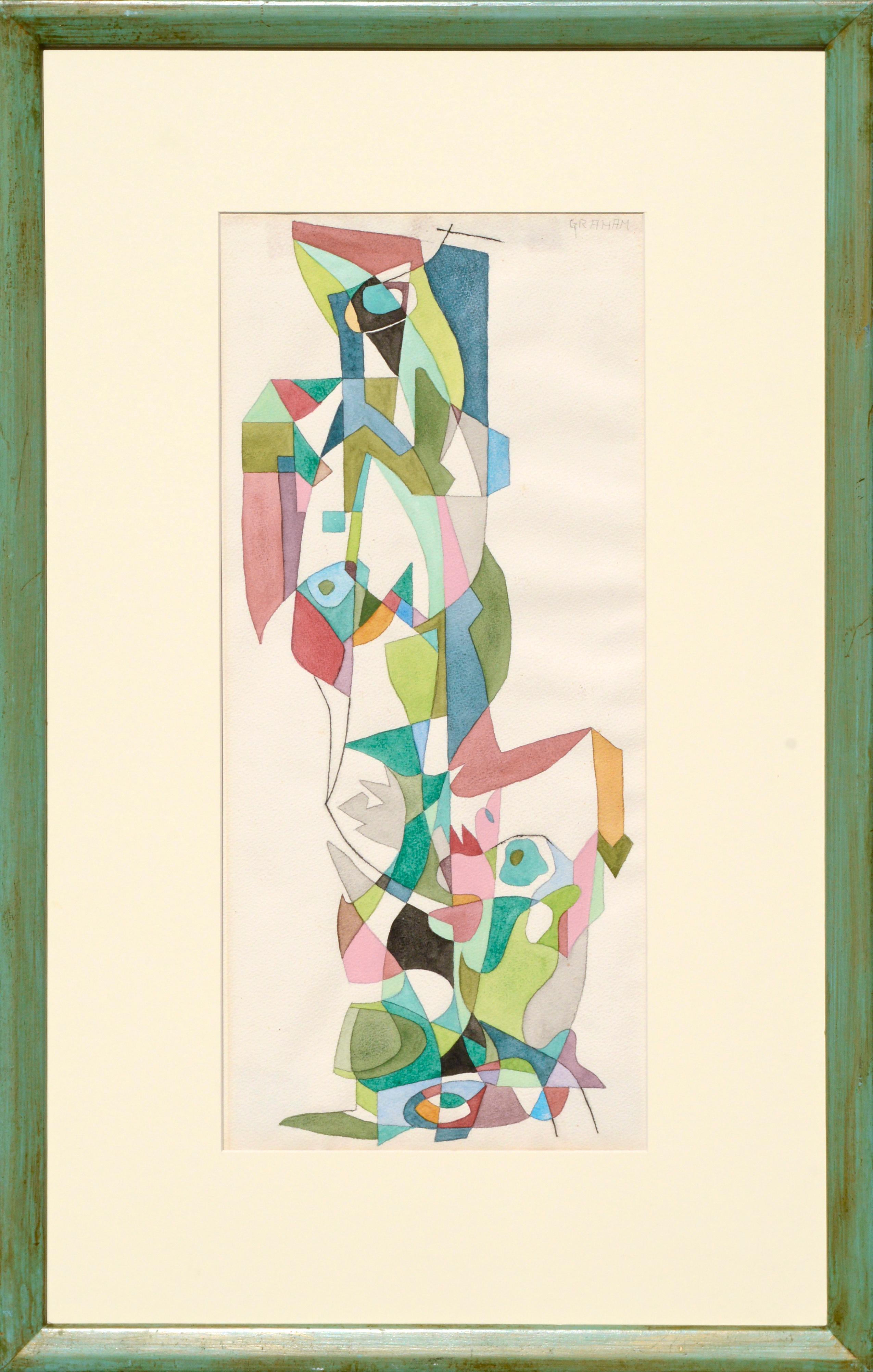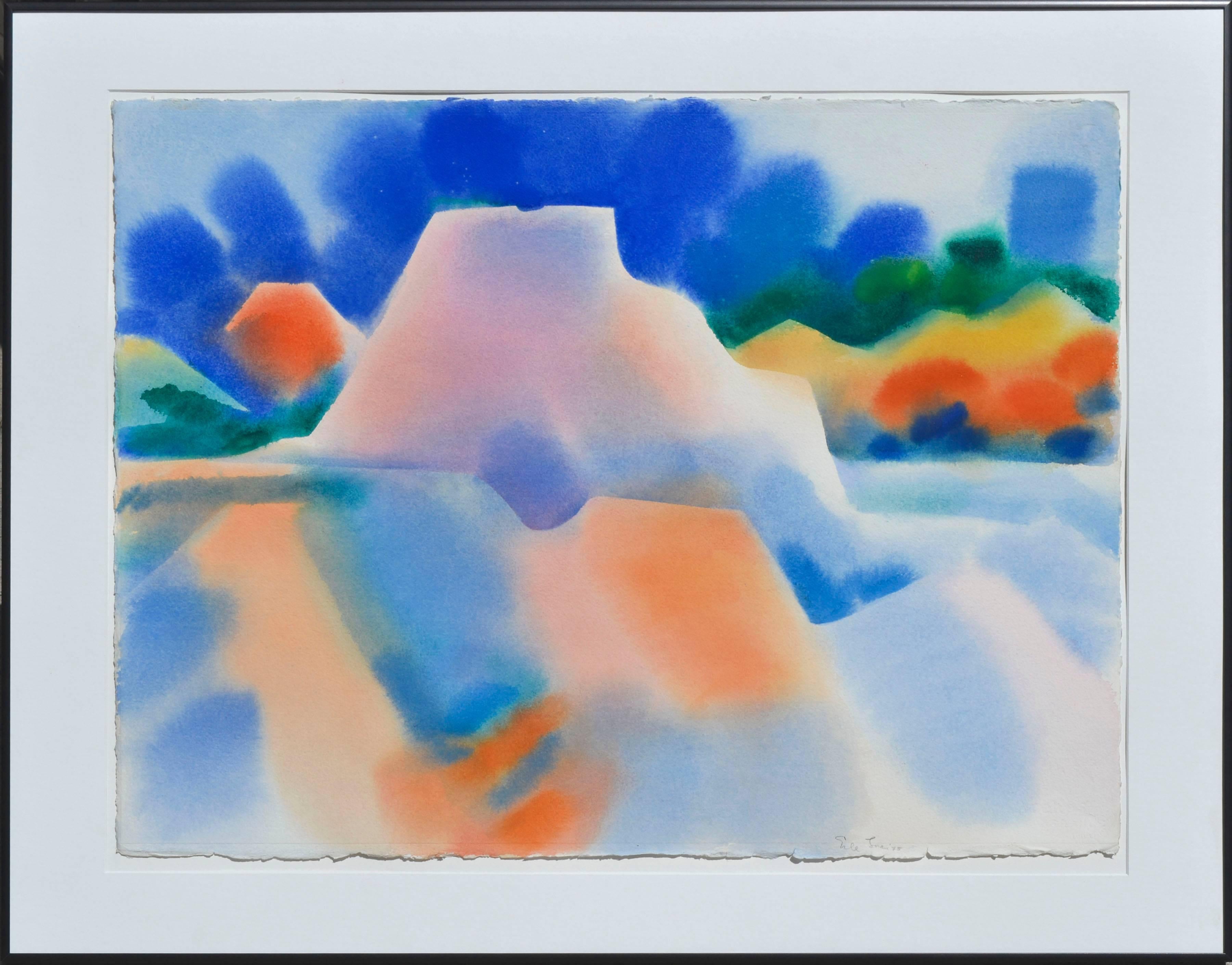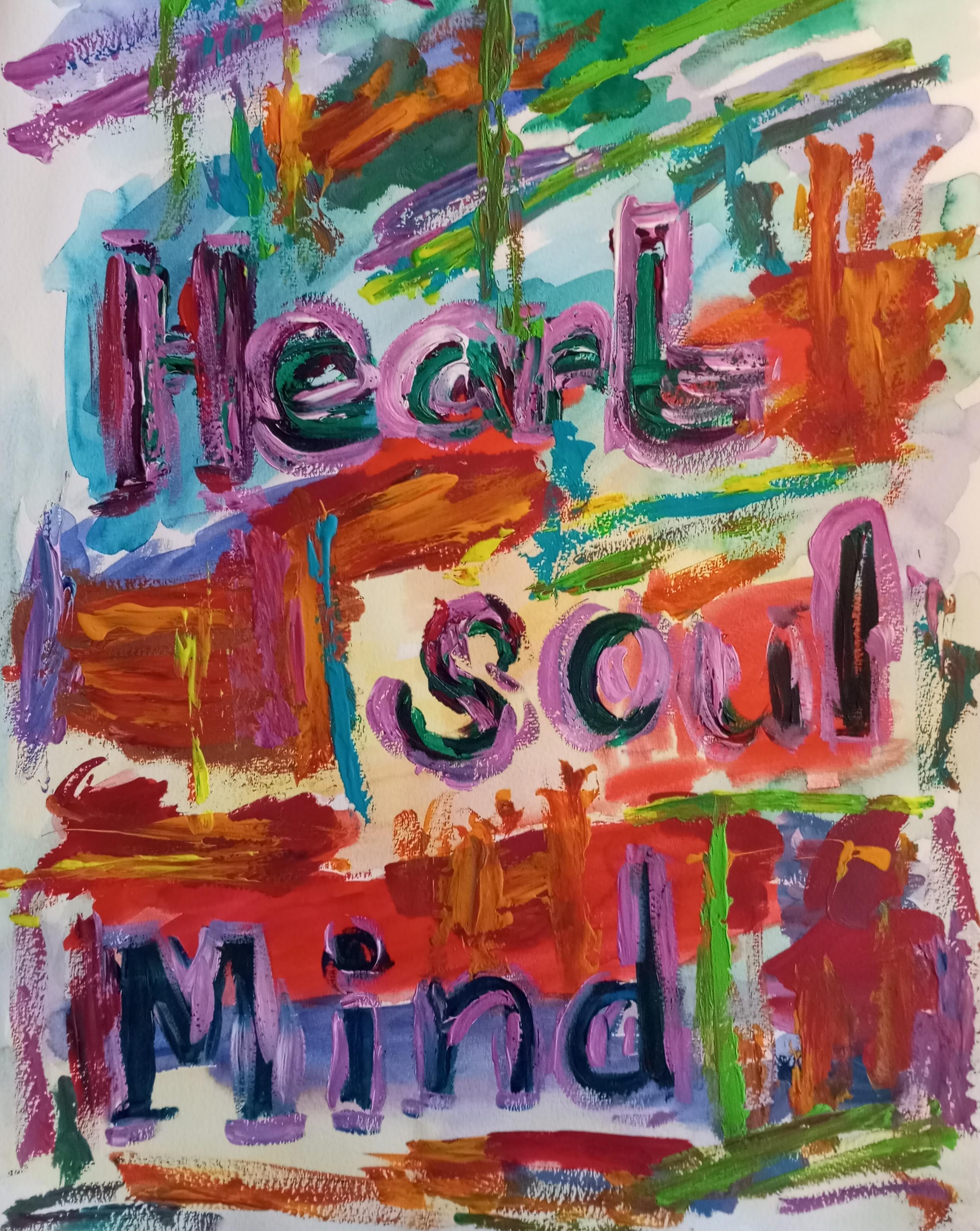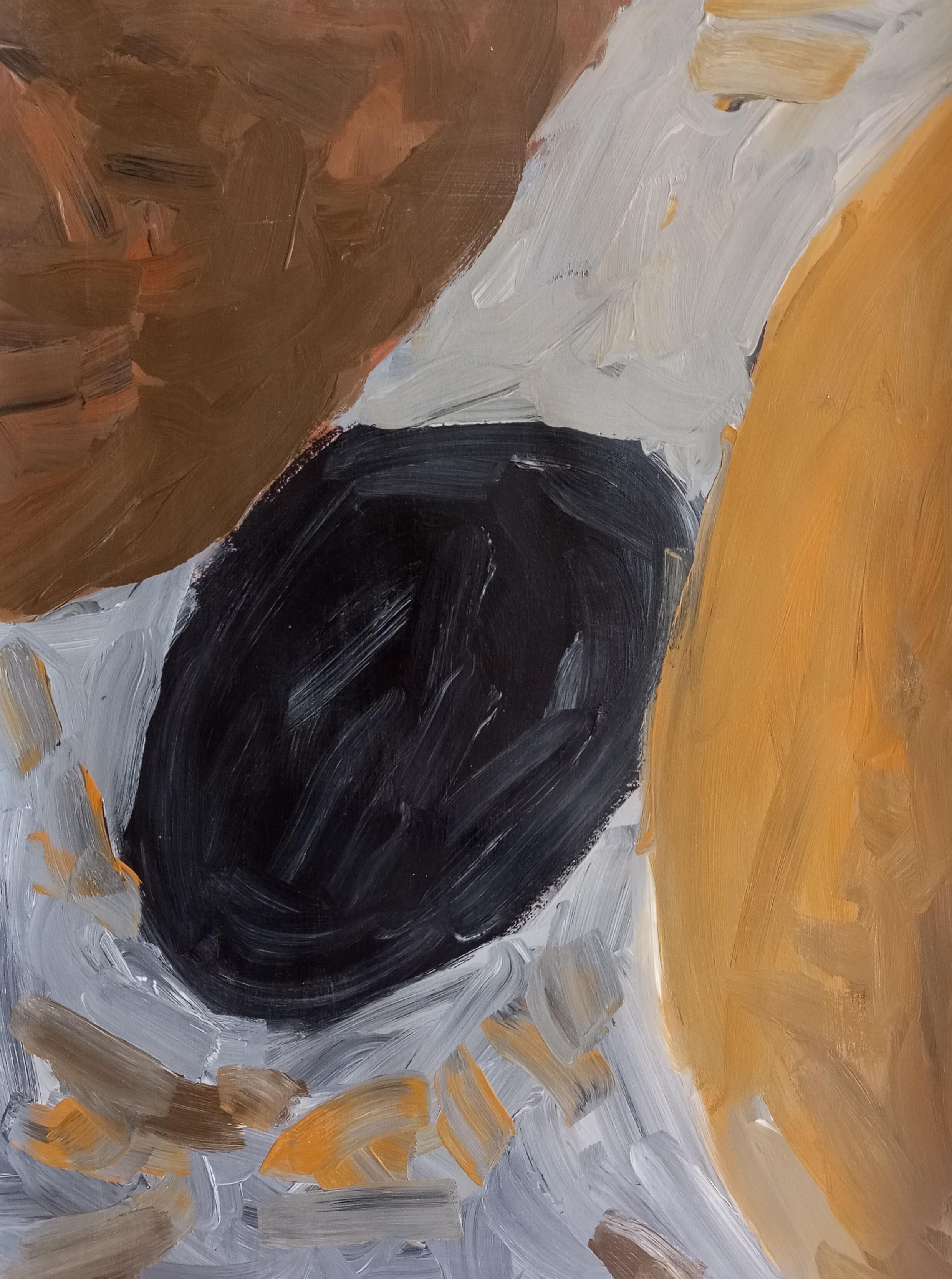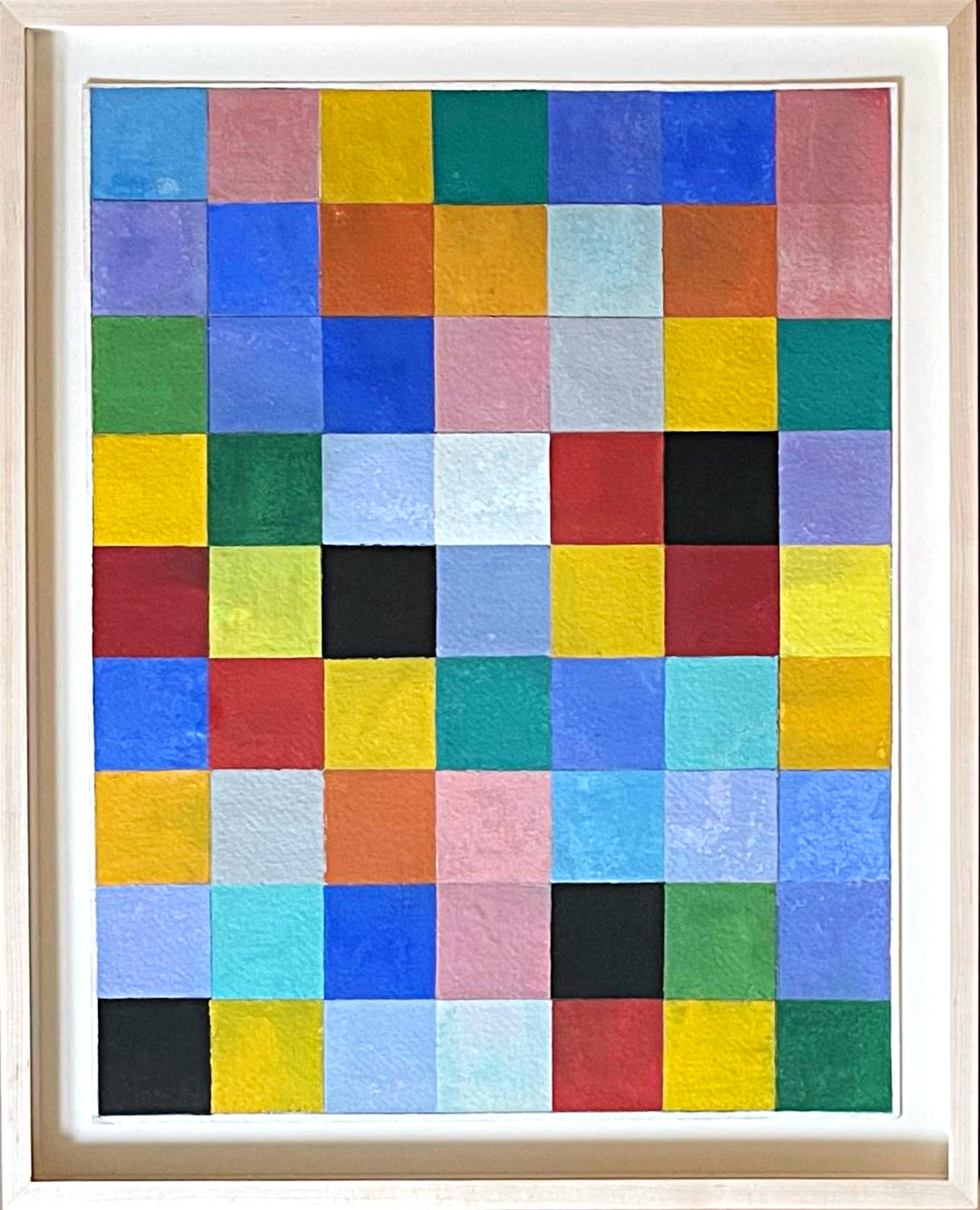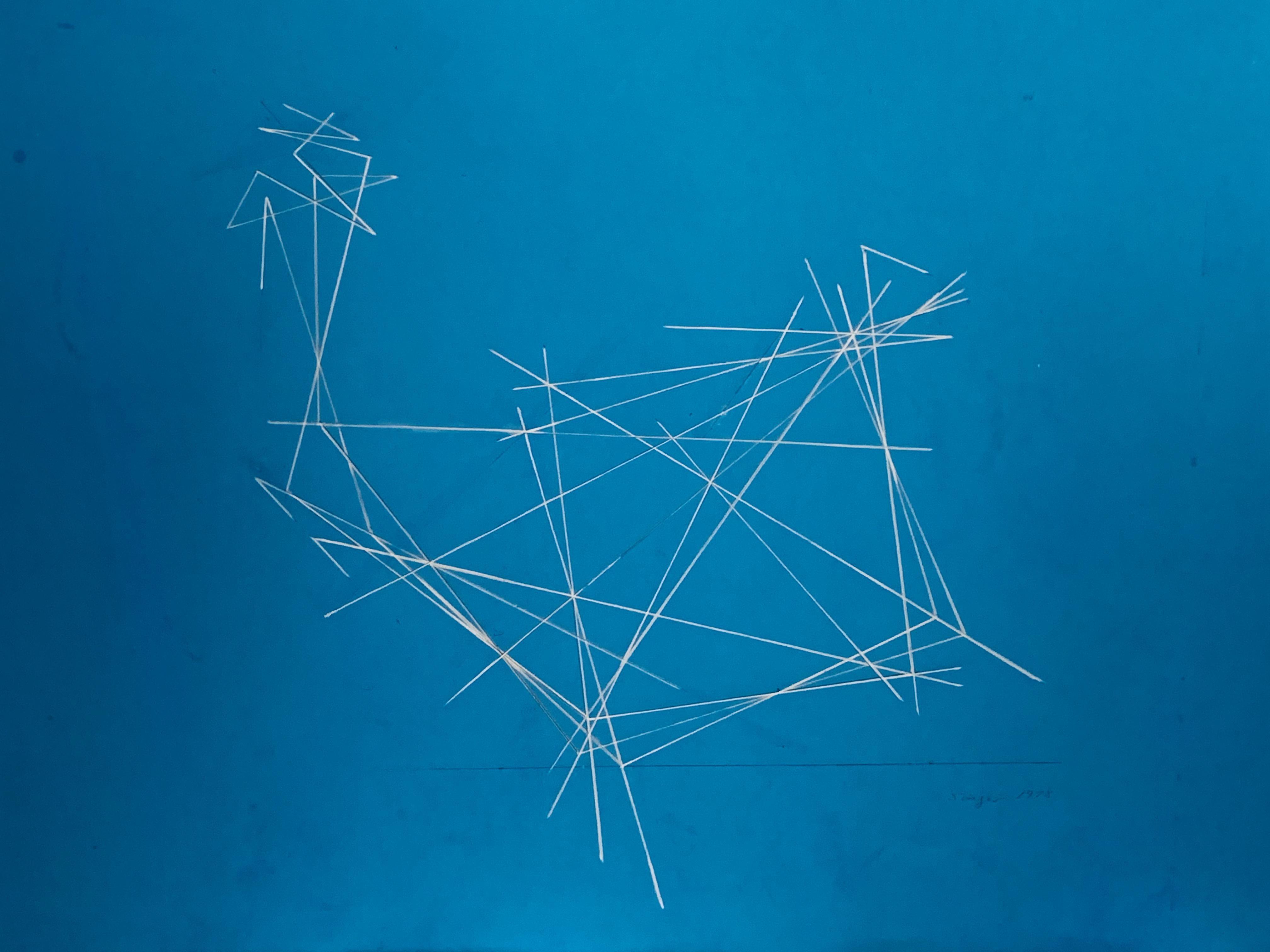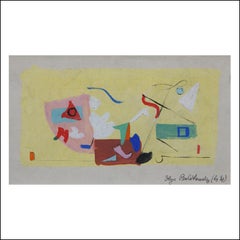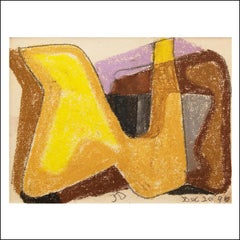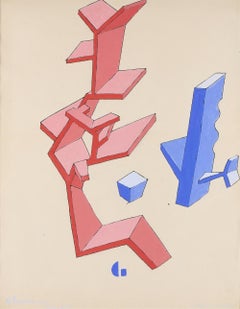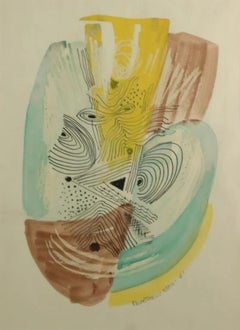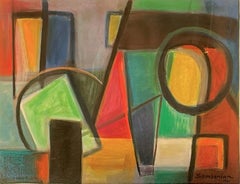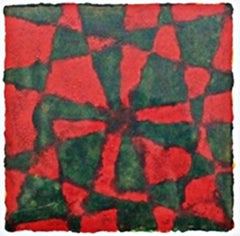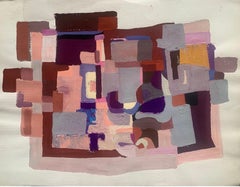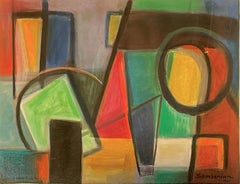
"Colorful Geometric Abstraction, " Simon Samsonian, Armenian Artist
View Similar Items
Want more images or videos?
Request additional images or videos from the seller
1 of 9
Simon Samsonian"Colorful Geometric Abstraction, " Simon Samsonian, Armenian Artist1981
1981
$2,800List Price
About the Item
- Creator:Simon Samsonian (1912 - 2003)
- Creation Year:1981
- Dimensions:Height: 24 in (60.96 cm)Width: 30 in (76.2 cm)
- Medium:
- Movement & Style:
- Period:
- Condition:Good condition.
- Gallery Location:New York, NY
- Reference Number:1stDibs: LU115627255172
About the Seller
5.0
Gold Seller
Premium sellers maintaining a 4.3+ rating and 24-hour response times
Established in 2008
1stDibs seller since 2019
193 sales on 1stDibs
Authenticity Guarantee
In the unlikely event there’s an issue with an item’s authenticity, contact us within 1 year for a full refund. DetailsMoney-Back Guarantee
If your item is not as described, is damaged in transit, or does not arrive, contact us within 7 days for a full refund. Details24-Hour Cancellation
You have a 24-hour grace period in which to reconsider your purchase, with no questions asked.Vetted Professional Sellers
Our world-class sellers must adhere to strict standards for service and quality, maintaining the integrity of our listings.Price-Match Guarantee
If you find that a seller listed the same item for a lower price elsewhere, we’ll match it.Trusted Global Delivery
Our best-in-class carrier network provides specialized shipping options worldwide, including custom delivery.More From This Seller
View All1, 000 piece Museum Quality Collection of Art & Objects from NYC 1939 Worlds Fair
By Ilya Bolotowsky
Located in New York, NY
1,000 piece Museum Quality Collection of Art & Objects from NYC 1939 Worlds Fair.
Ilya Bolotowsky (1907-1981) "1939 World’s Fair Mural Study for the Hall of Medical Sciences...
Category
1930s Abstract Geometric Abstract Drawings and Watercolors
Materials
Paper, Gouache, Canvas, Plaster, Oil
Abstract Non-Objective Mid 20th Century Color Field Painting James Daugherty
Located in New York, NY
Abstract Non-Objective Mid 20th Century Color Field Painting James Daugherty
James Daugherty (1887 – 1974) "Unidentified Flying Object," 12 x 16 inche...
Category
1960s Abstract Abstract Drawings and Watercolors
Materials
Oil, Board
"Sculpture Model" Abstract American Drawing Modernism Mid 20th Century Cubism
Located in New York, NY
"Sculpture Model" Abstract American Drawing Modernism Mid 20th Century Cubism
Charles Biederman (American, 1906-2004)
Sculpture Model
Ink and gouache on Arches paper
Sight: 18 x 1...
Category
1930s Abstract Abstract Drawings and Watercolors
Materials
Paper, Gouache
Abstract American Modernism Mid-Century WPA Era Drawing Woodstock 20th Century
By Konrad Cramer
Located in New York, NY
Abstract American Modernism Mid-Century WPA Era Drawing Woodstock 20th Century, Sight size is 16 x 12 inches. The drawing is currently at the framers. A photo will be posted asap.
A...
Category
1930s Abstract Abstract Drawings and Watercolors
Materials
Paper, Ink, Watercolor
Abstract Cityscape Mid 20th Century Modern Cubist Work on Paper Drawing Ariel
By Clarence Holbrook Carter
Located in New York, NY
Abstract Cityscape Mid 20th Century Modern Cubist Work on Paper Drawing Ariel
11 x 4 1/2 inches. Framed by Heydenryk.
Provenance: Gary Snyder Fine Art
B...
Category
1950s Abstract Abstract Drawings and Watercolors
Materials
Paper, Gouache
ABSTRACT American Woman Abstract Non-objective Mid 20th Century Modern Drawing
By Irene Rice Pereira
Located in New York, NY
ABSTRACT American Woman Abstract Non-objective Mid 20th Century Modern Drawing
Irene Rice Pereira (1902-1971)
Abstract
8 1/2 x 5 1/2 inches
Watercolor, gouache, and ink on black paper
Signed lower right
Framed by Bark
BIO
rene Pereira was born in 1902 in Chelsea, Massachusetts and grew up in Great Barrington. She was strongly influenced by her mother who was an amateur artist. Irene began art lessons at the age of fifteen; she took a secretarial job because her father had died. She took art classes at the Art Students League in New York City. At the age of twenty-one she married the first of three husbands, Humberto Pereira, whose name she kept.
She traveled extensively in Europe and North Africa and was much inspired by the expansive vistas of the Sahara Desert. Returning to New York, she began incorporating these visions into her work, increasingly experimental in her styles and methods. At first she painted on canvas, then she devised a means of actually incorporating light into her works by painting on layers of glass and mounting the layers together.
In 1942 she married George Brown, an engineer, who helped her experiment with a variety of materials. By the 1950s she became more interested in writing poetry and, divorced from Brown in 1952, she married George Reavey, an Irish Poet...
Category
1950s Abstract Abstract Drawings and Watercolors
Materials
Paper, Watercolor, Gouache
You May Also Like
"Colorful Geometric Abstraction, " Simon Samsonian, Armenian Artist
Located in New York, NY
Simon Samsonian (1912 - 2003)
Colorful Geometric Abstraction, 1981
Oil on paper
16 x 22 inches
Signed and dated lower right
Provenance:
Estate of the artist
This survivor of the Armenian genocide wound up in a Cairo orphanage in 1927. He rose to fame as one of Egypt’s great modernists, but after moving to Long Island late in life he withdrew into anonymity. Now his compelling story is being told. Art historians are finally beginning to realize that the power of abstraction in its early years was a zeitgeist not limited to the major European centers of the avant-garde — Paris, Munich, and Moscow — but one that quickly rippled to major cities throughout the world. Within a few decades that original shock of a new vision had inspired thousands of artists from different cultures — particularly those the Middle East — whose translations were not slavish imitations of works by seminal figures like Picasso, Braque, Malevich, and Kandinsky but creative variants colored by their respective cultures.
This essay focuses on an extraordinary Armenian artist, his harrowing survival of the genocide, his rise to fame in Cairo, and his creation of a unique style of abstraction. Art historians have typically formed a chorus that teaches the history of abstraction like this: Just before and during the World War I era, several avant-garde artists emerged to create shockingly different new forms by which artists could express themselves. In Paris, Picasso and Braque broke out with cubism, quickly followed by Mondrian. In Moscow, Malevich created Suprematism, the ultimate hard-edge geometric abstraction. And in Munich, Kandinsky emerged as the father of Abstract Expressionism. Within these few short years a zeitgeist was sensed throughout the art world. American pioneers, too — particularly Stanton Macdonald-Wright and Morgan Russell — felt this explosive freedom of expression. When Europe was recovering after World War I it became clear that Paris would retain its title as capitol of the art world, lasting through the Roaring Twenties and even through the Great Depression. But the end of World War II changed everything. A parallel war had been won by a group of irascible young Abstract Expressionists in New York — led by Pollock, Rothko, DeKooning, and Kline. No sooner had Paris been liberated from the Germans than Picasso, Matisse, Breton, and Duchamp surrendered to the Americans. From that point on New York would be the epicenter of the art world.
But a lens that focuses myopically on the war between the avant-garde of Paris and New York misses the wider narrative of multiple aesthetic modernities that developed in the several decades following World War I. For Armenian artists the matter is even more complex owing to the genocide of 1915 where more than 1.5 million people — seventy-five percent of Armenians in the Ottoman Empire — were massacred. Those not shot on the spot were sent on death marches through the Mesopotamian desert without food or water. Frequently, the marchers were stripped and forced to walk naked under the scorching sun until they dropped dead.
As a child Samsonian witnessed the murder of his parents and most of the members of his family. Soon thereafter, his older sister, Anahid, quickly shepherded him into a line of children being rescued by Greek nuns. But they became separated and he lost her, too. He was sent to a Greek orphanage in Smyrna (now Izmir), on Turkey’s west coast. Because he only knew his first name, the orphanage gave him a last name based on the place where they found him — Samsun — a major port on Turkey’s north coast on the Black Sea. His birth date was unknown, too. According to Samsonian’s vague recollections he assumed he was about three or four years old at the onset of the genocide, which would place his birth year in 1911 or 1912. In 1922, when Samsonian was about 10, the Turks ended their war with the Greeks by putting Smyrna to the torch in what has been called the “Catastrophe of Smyrna.” Once again, the child was on the run, escaping the fire and slaughter. He found temporary refuge in Constantinople, but within a year that major port would fall to the Turks, too, and become renamed as Istanbul. This time, Samsonian was whisked away to an orphanage in Greece founded by the American charity, Near East Relief — which is credited with saving so many Armenian orphans that the American historian Howard M. Sachar said it “quite literally kept an entire nation alive.
Any understanding of Samsonian’s approach to modernism requires careful consideration of the impact of his early years because his art is inseparable from the anguish he experienced. In 1927, when he was a teenager, he was transferred to Cairo, Egypt, then a cosmopolitan city hosting a sizable portion of the Armenian diaspora. There he lived with thirty-two other children on the top floor of the Kalousdian Armenian School. Upon graduating in 1932 he won a scholarship to attend the Leonardo da Vinci Art Institute — an Italian art school in Cairo — where he won first prize in final examinations among one hundred students. He found work with an Armenian lithographic printer and he returned to the Kalousdian Armenian School to teach drawing. In 1939 he married one of his students, Lucy Guendimian.
The Cairo in which Samsonian matured as an artist was home to many prominent art collectors after World War I. In this receptive environment Samsonian exhibited widely and won many awards. Beginning in 1937 and for the next thirty years he exhibited annually at the prestigious Le Salon du Caire hosted by the Société les Amis de l’Art (founded in 1921). After World War II he hit his stride as a modernist in Cairo, counting among his peers other artists of the Armenian diaspora such as Onnig Avedissian, Achod Zorian, Gregoire Meguerdichian, Hagop Hagopian...
Category
1980s Abstract Geometric Abstract Drawings and Watercolors
Materials
Paper, Oil
Unique signed gouache on linen painting (Framed) by renowned Provincetown artist
Located in New York, NY
James Balla
Untitled gouache painting, 1992
Mixed Media Oil on Linen
Signed and dated on the front of the work; the verso of the frame bears the UFO (Albert Merola) gallery label.
F...
Category
1990s Abstract Geometric Abstract Paintings
Materials
Mixed Media, Oil, Gouache, Pencil
Double Pyramid Thought Form
By Matt Magee
Located in Houston, TX
Matt Magee
Double Pyramid Thought Form, 2019
Oil on aluminum
25 1/2 x 19 1/4 in (64.8 x 48.9 cm)
JPHB 5837
Category
21st Century and Contemporary Abstract Geometric Abstract Drawings and W...
Materials
Oil
Abstract Geometric Composition. Second half of the 20th century
Located in Firenze, IT
Abstract Geometric Composition
Date: Second half of the 20th century
Medium: Gouache on paper
Dimensions: H 50 cm x W 65 cm approx.
Description: Modular geometric structure with ove...
Category
Late 20th Century Abstract Geometric Abstract Paintings
Materials
Paper, Gouache
$200 Sale Price
20% Off
Hearts to One - Abstract Watercolor with Blue & Red Heart
By Dessie Wilcox
Located in Soquel, CA
Brightly colored composition of blue and red hearts merging together by Dessie Wilcox (American, b. 1948). From her "Heart Wall" series, Wilcox has been creating heart painting to ra...
Category
Early 2000s Abstract Geometric Abstract Drawings and Watercolors
Materials
Paper, Watercolor
$805 Sale Price
30% Off
"Indian Dance", Multicolor Abstract Geometric Composition
By Ellwood Graham
Located in Soquel, CA
Bright and colorful abstract geometric watercolor with multicolor connected forms cascading in a dynamic vertical composition by Ellwood Graham (American, 1911-2007). Signed "GRAHAM" in the upper right corner, and "Ellwood Graham" on verso. Circa 1961-1966. The title "Indian Dance...
Category
1960s Abstract Geometric Abstract Drawings and Watercolors
Materials
Paper, Watercolor, Pen, Pencil
$805 Sale Price
30% Off
